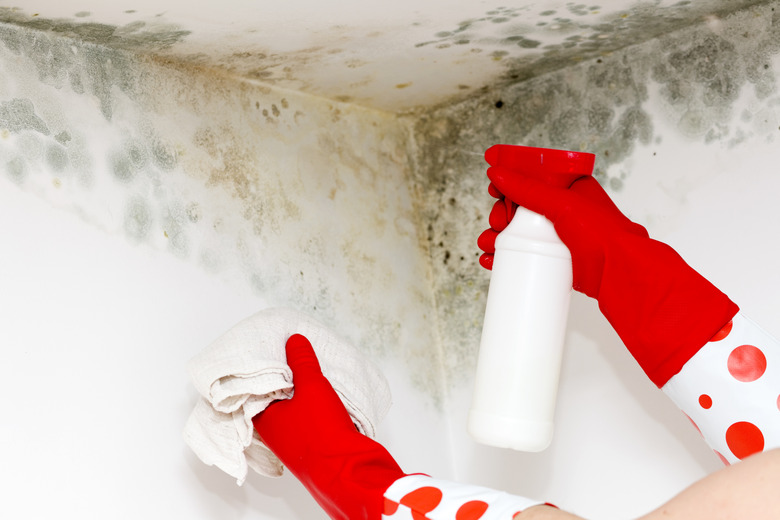What Causes Black Spots On Walls?
The sudden appearance of black spots or marks on your otherwise unmarred wall can be alarming. Though your first assumption may be a toxic intruder, black spots may be caused by a number of sources, and can be remedied with varying levels of treatment. Identifying the specific cause of the black spots is the first step in determining the most effective, safe method of removal.
Identifying Causes
Identifying Causes
Corroded drywall screws and fasteners cause patterned, similarly sized black spots. Cigarette smoke, candles and fireplaces can cause smoke or soot stains that look like black spots with smudges of brown, yellow or gray. Insect droppings from spiders, flies and other insects may leave small, concentrated black spots on walls. Occasionally, black spots on walls are indicators of fungal spores and mold, some varieties of which can be severely toxic.
Removing Simple Spots
Removing Simple Spots
Remove black spots caused by a pen or marker with an abrasive sponge and soap and water. Clean soot and nicotine stains with a mixture of warm water and a mild degreasing soap or detergent; for stubborn areas, use an abrasive sponge. Insect droppings or fly specks can be cleaned with a rag damp with an ammonia and water mixture. A new coat of a stain-covering primer and paint will also cover up stains that cannot be completely removed, but the wall should be as clean as possible before adding primer and paint.
Sources of Moisture
Sources of Moisture
Moisture represents a common cause of both corrosion marks and mold growth. Humidifiers, leaks, burst pipes, poor insulation, weak vapor barriers, improperly installed pipes or water-exposed basements are common causes of moisture that damage structures and promote mold growth. Depending on the source of the moisture and the extent of your home repair abilities, you may need to contract a professional with expertise in water damage to address underlying moisture concerns.
Managing Mold
Managing Mold
Black mold is one of the most toxic varieties of mold. According to the Environmental Protection Agency, small amounts of mold that cover less than ten square feet should be scrubbed with a mixture of detergent and water. Dispose of affected building materials that can be replaced. Wear a respirator, goggles that create a seal against your face and gloves during removal to reduce spore exposure. If the mold covers more than ten square feet, or you cannot contain the moisture source, consult a local contractor with a specialization in mold removal.
References
- Trained Eye Home Inspection: Black Spots on Ceiling
- University of Connecticut: Black Spots on Houses
- Its Not Mold Until Its Tested; Andrey Golube
- Biological Risk Engineering Handbook: Infection Control and Decontamination; Martha J. Boss, Dennis W. Day
- United States Environmental Protection Agency: A Brief Guide to Mold, Moisture, and Your Home
